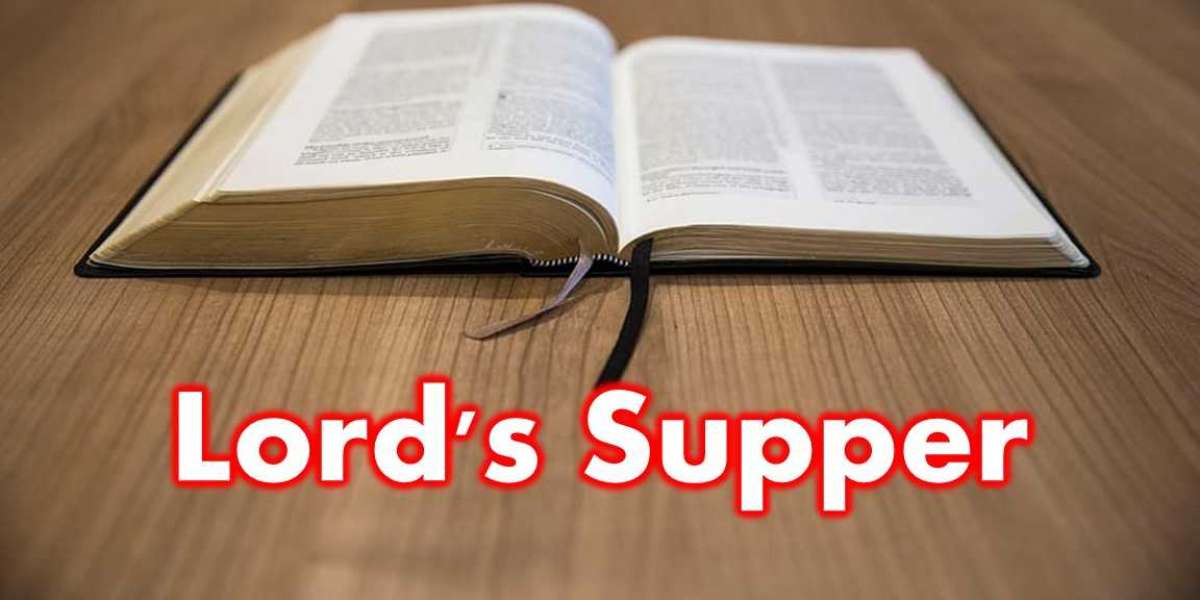We teach that the Lord’s Supper is an annual observance on the 14th of Aviv, which includes foot washing as an ordinance of humility and partaking of unleavened bread and wine as symbols of our Lord’s body and blood; it is distinct from the Passover and is only for baptized Christians.
The Gospels tell us that Jesus ate the Last Supper with His disciples in the city of Jerusalem the evening before the Feast of Unleavened Bread began. This was the 14th day of the first month of the Hebrew calendar called Aviv or Nisan.
That night, Jesus taught His disciples to observe three distinct ceremonies as a memorial of His death and the establishment of the New Covenant. Years later, Paul referred to this special observance as the Lord’s Supper.
The first ceremony involves washing one another’s feet. Jesus laid aside His outer garments, took a towel and washed His disciples’ feet. Afterward, He said to them, “If I then, your Lord and Teacher, have washed your feet, you also ought to wash one another’s feet. For I have given you an example, that you also should do just as I have done to you” (John 13:14-15).
This ceremony is not just for pastors but for everyone who partakes of the Lord’s Supper. Jesus wanted all Christians to be humble enough to wash one another’s feet before partaking of the Lord’s Supper. This would force Christians to love and forgive one another on a continual basis. Anyone who would refuse to wash the feet of someone within the congregation needed to repent of something before they could participate in this sacred ceremony.
The next ceremony involved eating unleavened bread as a symbol of Christ’s broken body. In 1 Corinthians 11:23-24, Paul wrote, “For I received from the Lord what I also delivered to you, that the Lord Jesus on the night when he was betrayed took bread, and when he had given thanks, he broke it, and said, ‘This is my body, which is for you. Do this in remembrance of me.’”
The last ceremony involved drinking a small portion of wine as a symbol of Christ’s shed blood. In 1 Corinthians 11:25-26, Paul wrote, “In the same way also he took the cup, after supper, saying, ‘This cup is the new covenant in my blood. Do this, as often as you drink it, in remembrance of me.’ For as often as you eat this bread and drink the cup, you proclaim the Lord’s death until he comes.”
Paul specifically said that Jesus instituted this ceremony on the night that He was betrayed; that was on the 14th day of Aviv, the day before the Feast of Unleavened Bread. He also said that Christians should eat this bread and drink this cup repeatedly in order to proclaim the Lord’s death until he comes. Thus, the Lord’s Supper is a memorial of the death of Jesus Christ, our Passover lamb, who was slain for our redemption (1Cor 5:7-8).
According to church history, the apostle John and Phillip the evangelist taught the Christians of Asia Minor to observe this ceremony every year on this same date. People called these Christians Quartodeciman, those who observe the Lord’s Supper on the 14th day of Aviv. They continued to follow this apostolic practice in the second, third and fourth centuries despite opposition from apostates who no longer kept God’s Sabbaths and biblical festivals.
Paul also said that this cup is the new covenant in Jesus’ blood, therefore, it is self-evident that only baptized Christians should participate in this ceremony. Christians partake of the bread and the cup to reaffirm their new covenant relationship with Christ, so it would be sacrilege for children or unbelievers to partake of these sacred elements.
This rule is also confirmed by church history. Didache 9:5 says, “But let no one eat or drink of your Eucharist except those who have been baptized into the name of the Lord, for the Lord has also spoken concerning this: ‘Do not give what is holy to dogs.’”
The Lord’s Supper is separate and distinct from the Passover. Jesus and His disciples ate the Last Supper the night before the Passover lambs were slain and eaten; Jewish rabbis at the time of Jesus were known to gather with their disciples the night before Passover in order to rehearse the Passover seder. Jesus used this occasion to establish the Lord’s Supper, which Jewish and Gentile believers would observe in the years to come.
The Lord’s Supper is fundamentally different than the Passover in many ways. First, only Christians can observe the Lord’s Supper, while only circumcised Israelites and their families can eat the Passover. Second, Christians would gather as a congregation to celebrate the Lord’s Supper, but Israelite families would gather in individual homes for the Passover. Also, Christians can celebrate the Lord’s Supper anywhere that a congregation exists, but Israelites can only celebrate the Passover in Jerusalem, where God has placed His name and His sanctuary. Finally, Paul explicitly commanded the Christians at Corinth not to eat a meal when they assembled for the Lord’s Supper, while the Passover seder requires the eating of a meal, which includes the Passover lamb, unleavened bread and bitter herbs.
In conclusion, the Lord’s Supper is an annual observance that takes place on the 14th day of first Hebrew month called Aviv; this ceremony includes foot washing as an ordinance of humility and partaking of unleavened bread and wine as symbols of our Lord’s body and blood. It is distinct from the Passover and is only for baptized Christians.
Credits
united-kingdom-sheffield-gospel-table.jpg/wallpaperflare.com/PD
Scriptures are from the English Standard Version unless otherwise noted.
The Apostolic Fathers, 2nd edition, edit. Michael W. Holmes, trans. J. B. Lightfoot and J. R. Harmer, Baker Book House; Grand Rapids, 1989.






